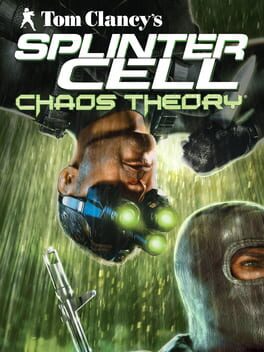Guards in stealth games have received more ridicule than they ever deserved. It’s easy to point out how they don’t notice things real people would notice, or how they forget about intruders they saw less than a minute ago, but realism rarely makes a game more fun. If guards were perfectly astute, stealth would be nearly impossible, and the unpredictability of human behavior would make it a frustrating game of trial-and-error. Instead, they’re given a set of patterns that allow players to make plans, and sharp enough senses to only punish definite errors. Splinter Cell: Chaos Theory does a great job of communicating these parameters, with a visibility meter broken into four distinct sections, and a similarly segmented noise gauge. All it takes is one look at the meters to see what gave you away, and to know what to avoid in the future. Ideally, this level of clarity would minimize the compulsive savescumming the genre is often criticized for, but Chaos Theory falls at the last hurdle with the aforementioned over-astuteness that makes these tools nearly useless. The visibility meter being broken into four sections gives the impression that as long as you’re in the darkest quadrant, you’re as good as you could be, but this is far from true. Instead, it’s a weird sort of tiered binary, where being in total darkness means guards won’t see you even when you’re nose to nose, but being one tick above that means you can be spotted from roughly five meters out, with the distance increasing from there. Since all the levels are within buildings and enclosed spaces, what this really means is that you’re either invisible or not, with the smallest missteps leading to instant detection. The sound meter fares slightly better, but sounds other than your footsteps have their own inconsistencies. Even with subsonic ammo and a suppressor, shooting windows will have guards running straight to you instead of towards the distraction. It makes the stealth system the worst of both worlds, where it’s too realistic to be much fun, but with enough unrealistic elements in such sharp contrast that it’s almost laughable. What’s a shame is that with a few patches to make the visibility meter work more linearly, and for the distractions to be more useful, Chaos Theory would be a pretty good game. While weak level design would still hold it down, it would be fun enough to where I could recommend it to stealth fans. However, this game came out before the age of post-release patches, so I’m afraid that its full potential will forever go unnoticed.
